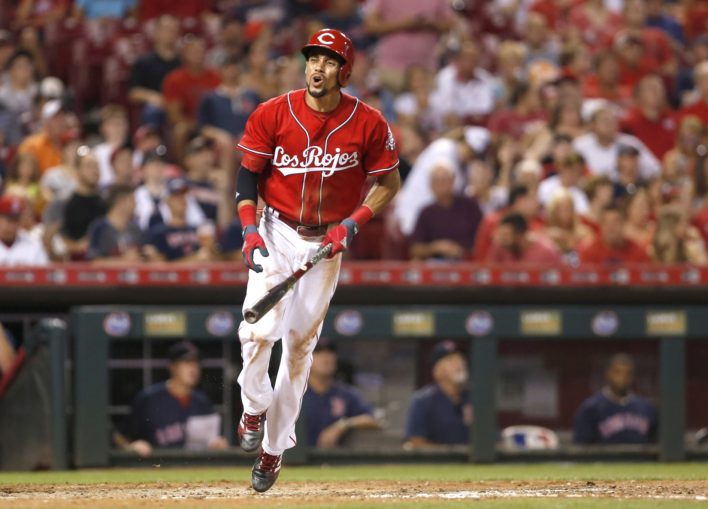
Billy Hamilton is now a free-agent: prior to Friday’s non-tender deadline, the Reds failed to tender their speedy CF a contract, granting him free agency. It was hardly a dumb move on the Reds’ part—despite Hamilton’s superb bat and defense, Hamilton consistently graded as one of the worst hitters in the big leagues, and Hamilton was projected to earn $5.9 million through arbitration—a bit pricey for a player who can’t hit. Hamilton has some obvious and apparent flaws—but could he and the Mets be a match?
With Jay Bruce reportedly included in the pending Cano/Diaz blockbuster, the Mets’ outfield is starting to look a little bit bare—once Bruce leaves, the Mets will have just three healthy true outfielders on their 40-man roster—Michael Conforto, Brandon Nimmo, and Juan Lagares. Yoenis Cespedes is out until what looks like the second half of next season (barring a setback), and Dominic Smith is an outfielder in name only until he proves otherwise (nevermind the fact that Smith has hit just .210/.259/.406 in his career)—so the Mets depth in the outfield is threadbare. Given Lagares’ health history, it would certainly behoove the Mets to pick up a fourth-outfield type.
That’s where Hamilton comes in—there is arguably no better fourth outfield-type on the market. Hamilton is a stellar defensive option: by Outs Above Average, Hamilton has consistently graded as one of the top outfielders in the game, finishing in the top 10 every season since the metric was introduced in 2016. In terms of a late-inning defensive replacement, Hamilton represents a superb option. And given Lagares’ injury history, rostering Hamilton would give the Mets true centerfield depth such that they would have a quality centerfield option in the event of an injury to Lagares (as opposed to their plan from 2018, which was to simply move Nimmo to center). While Hamilton isn’t exactly a stellar starting option, he could still do so in a pinch without hurting the team that badly.
Hamilton also represents a stellar pinch-running option off the bench. Since 2014, only 2 players have stolen 200+ bases—Dee Gordon (242 SB) and Hamilton (264). By Statcast’s sprint speed metric, Hamilton was the 5th fastest baserunner last season – for a relatively slow team whose only realistic stolen base threat is Amed Rosario, Hamilton gives the Mets a clear threat on the basepaths. It’s not unreasonable to think that the Mets might use Hamilton as a pinch-runner in the eighth, then keep him in the game in the ninth to keep his glove in the outfield.
The catch (and the reason why Hamilton was non-tendered in the first place) is that Hamilton is an extremely poor hitter. Hamilton was the 3rd worst qualified hitter in the majors last season by wRC+, slashing a meager .236/.299/.327. Hamilton registered the lowest average exit velocity in 2018 among qualified hitters—Hamilton cannot hit the ball with any authority, and while his speed can help him beat out softly-hit ground-balls (per FanGraphs, Hamilton has a .283 BABIP on ground balls compared to a .238 league average since Hamilton’s debut), those types of hits will only ever be singles, and his production is significantly below average on fly-balls and line-drives. But in a bench role, Hamilton’s deficiencies at the plate can be dodged with timely substitutions.
The Mets are starved for outfielders with Cespedes out and Bruce apparently on his way to Seattle. Since their best CF option looks like Juan “Man of Glass” Lagares, making a move to get Hamilton as a bench piece would be one-part cheap and one-part savvy, reinforcing their outfield depth while improving their ability to move baserunners in high-leverage situations. Even if the Mets decide to upgrade their outfield with a flashier option who warrants starting time, Hamilton might still make sense as a bench bat and pinch runner.















